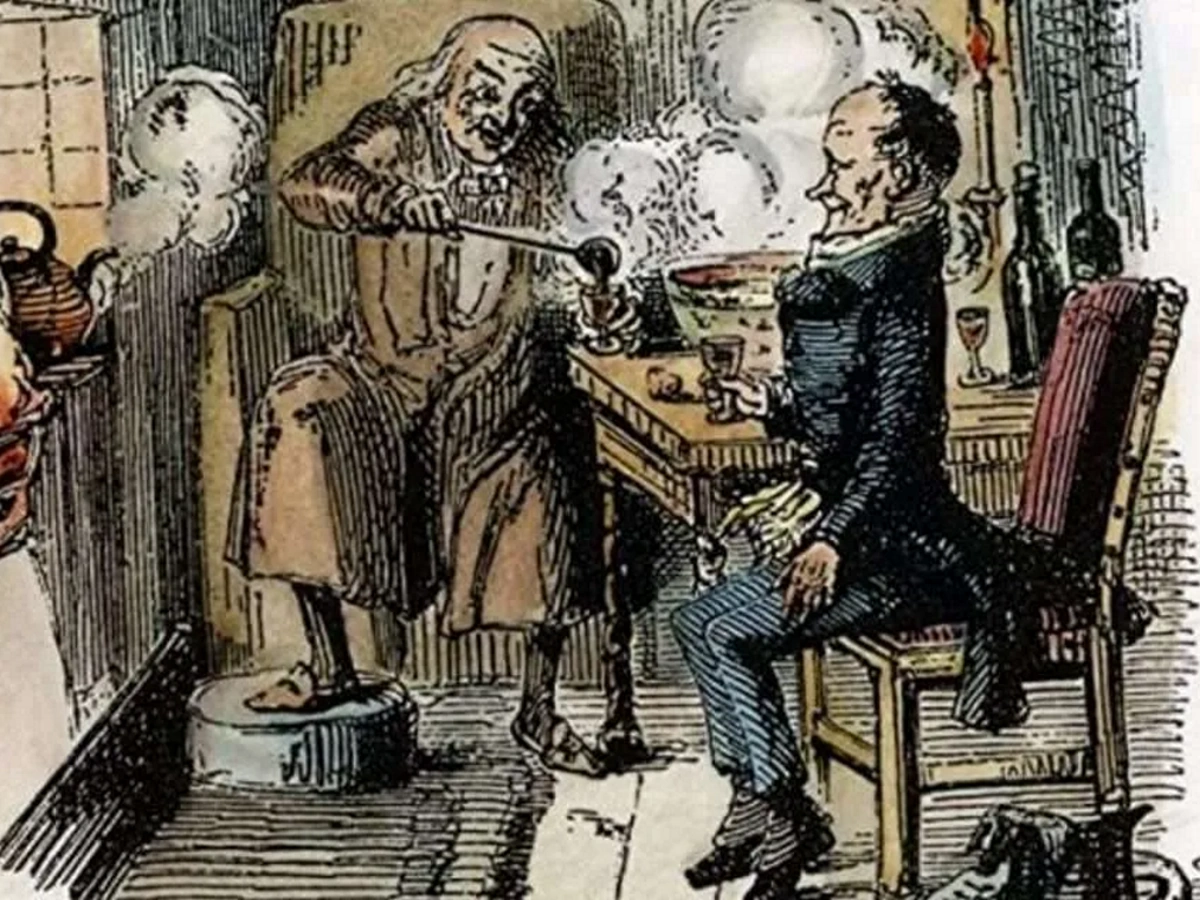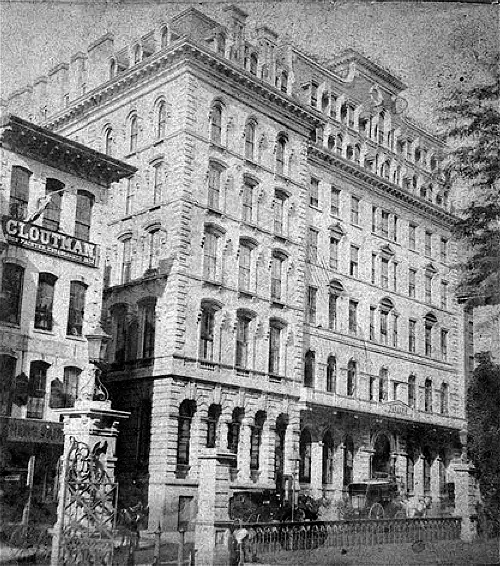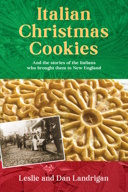Charles Dickens didn’t think much of American slavery on his first visit in 1842. But he loved Boston enough to return after the Civil War with the story that transformed Christmas in New England.
His readings of A Christmas Carol gave Boston just the push it needed to embrace Christmas — finally and fully.
The rest of the country had already adopted Christmas customs between the 1820s and the 1860s.
In Puritan New England, though, the Puritan dislike of the holiday lingered. The Puritans considered Christmas an abomination. They thought it an excuse for drunken revelry and papist idolatry.
The early Puritans in Massachusetts and Connecticut even fined anyone who celebrated the holiday. And they banned mincemeat pies.
But then along came Charles Dickens, who characterized that puritanical view as — well, Scroogelike.
Charles Dickens
Charles Dickens published A Christmas Carol in England on Dec. 19, 1843, and it sold out by Christmas Eve. England’s Victorian readers loved the story of the old miser transformed into a kinder man after three ghostly Christmas visits.
But the book didn’t do quite so well in the United States, partly because Charles Dickens had criticized the country. He didn’t like what he saw during his visit.
Slavery horrified him and he found the American people lacking social awareness. He skewered the United States in his book American Notes and later in Martin Chuzzlewit.
He did like Boston, though, after spending a month in the city.
“Boston is what I’d like the whole United States to be,” he said.
Christmas Evolves
When Dickens arrived in 1867, Boston children still had to attend school on Christmas Day. Neither New Hampshire nor Massachusetts law recognized December 25 as a holiday.
But during Charles Dickens’ 27-year absence, Christmas customs started to spread in New England.
A wave of Irish-Catholic immigrants put holly on their doorways, candles in the window and a family feast on the table at Christmas.
College professors returned from their studies in Germany with stories of gift giving and Christmas trees. In 1832, a German Harvard professor named Charles Follen brought a Christmas tree to a party in Cambridge, Mass. Before the Civil War, Salem minister William Bentley recorded in his diary the growing holiday practice of decorating with evergreens.

The Ghost of Christmas Past, original illustration by John Leech from the 1843 edition
By 1856, New Hampshire’s Franklin Pierce put up the first Christmas tree in the White House. And in 1860, Sarah Josepha Hale published a picture of a Christmas tree in her popular ladies magazine.
The tree came to symbolize home as the Civil War separated families. Union soldiers decorated Christmas trees with salt pork and hard tack. Soldiers on both sides began to link the day with homecoming.
Dickens Returns
The crowds that greeted Charles Dickens in Boston on Nov. 19, 1867 suggested the city was ready for a message of Christmas hope and cheer.
His American publishers, William Ticknor and James Fields, had persuaded him to return for a two-year reading tour of A Christmas Carol and other stories.
Charles Dickens made Boston his home away from home during his stay in America.
“Mr. Dickens always regarded Boston as his American home,” wrote George Dolby, his agent. “All his literary friends lived there.”
James Fields greeted the author and whisked him in a carriage to the Parker House, where a crowd gave him an ovation. Curiosity seekers peeked at him through the half-open dining room door as he ate.
The crowds annoyed him, but his mood improved after a few days’ rest. He practiced his readings in front of a large mirror in his Parker House apartment. That mirror now hangs on the mezzanine floor of the hotel – and sightings of Dickens’ ghost in it have been reported.
A Christmas Carol
Dickens gave a special reading of A Christmas Carol at the Parker House to the Saturday Club, which included his American friends: Ralph Waldo Emerson, Henry Wadsworth Longfellow and Oliver Wendell Holmes, Sr.
Then he gave his first public reading of A Christmas Carol on Dec. 3, 1867 at the Tremont Temple in Boston. His agent knew Dickens had a success on his hands by the time he finished the first chapter:
When at least the reading of The Carol was finished, and the final words had been delivered, and “So, as Tiny Tim observed, God bless us every one,” a dead silence seemed to prevail — a sort of public sigh as it were — only to be broken by cheers and calls, the most enthusiastic and uproarious.

Marley’s Ghost, original illustration by John Leech from the 1843 edition
Turkeys and Traditions
On Christmas Eve in Boston, a businessman named Fairbanks watched Charles Dickens read A Christmas Carol. The reading moved him so much he closed his factory on Christmas Day and sent every worker a turkey thereafter.
Scholars credit Charles Dickens with influencing Christmas traditions in New England with A Christmas Carol and other Christmas tales. He helped create the enduring imagery of roaring fires, jovial squires, the Christmas turkey and caroling children. He even coined the phrase ‘Merry Christmas.’
Most important, he helped transform Christmas from a day of drunkenness into a day of charity. According to Charles Dickens, Christmas allowed people, like Scrooge, to change into kinder, more generous selves.
Finally, Christmas became a day to bury the hatchet, as Scrooge made up with Bob Cratchit,
In 1870, President Ulysses S. Grant tried to reconcile the torn nation by declaring Christmas a national holiday.
* * *
The Christmas holiday actually began in ancient Rome — and so did Italian cookies. The New England Historical Society’s book, Italian Christmas Cookies, tells you how to make those delicious treats. It also bring you the history of the Italian immigrants who brought them to New England. Available now in paperbrack from Amazon; just click here.
With thanks to Charles Dickens as I Knew Him: The Story of the Reading Tours in Great Britain and America by George Dolby. This story was updated in 2022.




7 comments
[…] Justin Morrill, not one little bit. Morrill was a congressman from Vermont who probably never met Dickens. But the British author blamed Morrill for starting the Civil […]
[…] The Woodstock Inn offers a prix fixe wassail feast buffet with three seatings on Saturday night. The Pentangle Theater shows the film The Man Who Invented Christmas, the story of how Charles Dickens conjured up A Christmas Carol. […]
The show will not be the same without Her!
Abby is happy person to a show full of sadness.
[…] couldn’t have been that much of a hardship. Both Mark Twain and Charles Dickens described Hillhouse Avenue as ‘the most beautiful street in […]
[…] Ho Chi Minh worked as a baker there, and Malcolm X as a busboy. It holds a particular place in the story of A Christmas Carol, whose writer Charles Dickens is claimed to nonetheless linger on the purportedly […]
[…] Ho Chi Minh worked as a baker there, and Malcolm X as a busboy. It holds a particular place in the story of A Christmas Carol, whose writer Charles Dickens is alleged to nonetheless linger on the purportedly […]
Comments are closed.